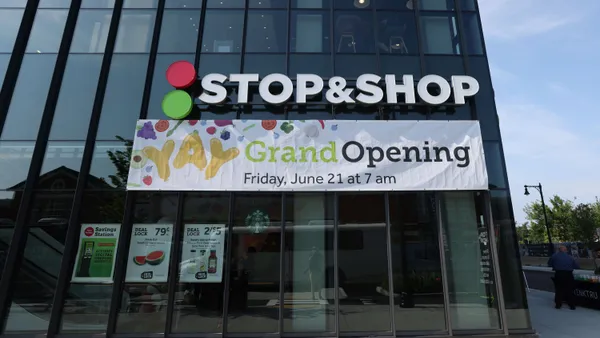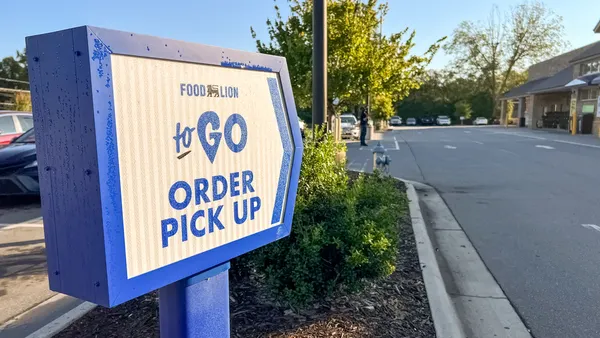Dive Brief:
- Amazon has expanded its Whole Foods Market home delivery to 10 new markets, including Ann Arbor, Detroit, Jacksonville, Madison, Milwaukee, Omaha, Orlando, St. Louis, Tampa and Tulsa. The company has also expanded its delivery in New York City and Seattle.
- Amazon’s Whole Foods delivery service first launched in February and the company noted Wednesday that it has plans to continue its expansion across the U.S. throughout the rest of the year. Two-hour delivery is free with a minimum order of $35, and one-hour delivery costs an additional $7.99. The companies also announced expanded grocery pickup from Whole Foods Market. The service launched last month and is now available in five markets, with continued plans for expansion.
- The e-commerce expansion should help Amazon reach more consumers with its grocery offerings. A recent survey from communications firm Walker Sands finds that just one in ten consumers (11%) have ordered groceries from Amazon.
Dive Insight:
With an additional 10 markets added to its Whole Foods delivery mix, Amazon has ramped up the service to 48 total markets in about eight months. The grocer is still playing catch up to Walmart, Kroger and Target in delivery, but with back-to-back 10-market expansion announcements, it's certainly making up some ground.
In doing so, Amazon is also going after delivery share in some of the most competitive states in the country – namely Florida and New York City. In New York, there are more than a dozen Whole Foods locations to help Amazon scale, but it won’t be easy — Walmart is also chasing delivery dollars there and recently started promoting its service through Jet in the market. In Florida, grocery square footage jumped 6% last year, while the rest of the country experienced a dip of nearly 29% in store openings last year.
Amazon has some differentiators to help bring its delivery business up to speed. The service is integrated into its Prime business, which includes more than 100 million subscribers. It also facilitates credit card rewards for Whole Foods purchases, enables a handful of Amazon’s delivery markets to include alcohol sales and allows those customers to order via Alexa.
According to a new report, The Future of Retail 2018, from Walker Sands Communications, Amazon is hitting on a number of consumer preferences with delivery: They’re excited about shopping online for the “new” category of groceries; they’re using voice shopping more (of the consumers who own a voice-controlled device, 50% percent have made a voice-controlled purchase in the past year); and fast delivery is quickly becoming a necessity (taking a page from its Prime playbook, Amazon is monetizing speedier, one-hour delivery, for an added fee).
The slower pace of Amazon’s grocery pickup service paints a different picture. Whole Foods is new to this space, having launched just last month. Meanwhile, Walmart has more than 2,000 stores with curbside food pickup, while Kroger’s recently renamed Grocery Pickup service is available at more than 1,000 stores. But Amazon’s slow and steady approach could be intentional.
The Walker Sands report, showing just 11% consumers have ordered groceries from Amazon should be concerning for the company. True, it leads online grocery sales, but considering its size and reach, it should arguably be generating more customer interest. Critics have also pointed out that Amazon's various grocery properties — including the struggling AmazonFresh, Prime Pantry and its limited private label lineup — are underwhelming and confusing.
The report also contains information that should worry all grocers moving online. Just 39% of consumers surveyed say they are at least somewhat likely to make an online grocery purchase in the next year, down slightly from 45% last year.
Amazon might be choosing patience here while more consumers warm up to e-commerce. The company is famous for experimenting and being willing to lose money, after all. Amazon and delivery are synonymous, but Whole Foods and pickup aren't there yet, so it will take some marketing efforts to get this service to a competitive level. With just a year under its belt in the space, this could also buy Amazon time to become more familiar with the grocery category, and allow it to figure out how to flex its innovation muscle for a competitive advantage.












